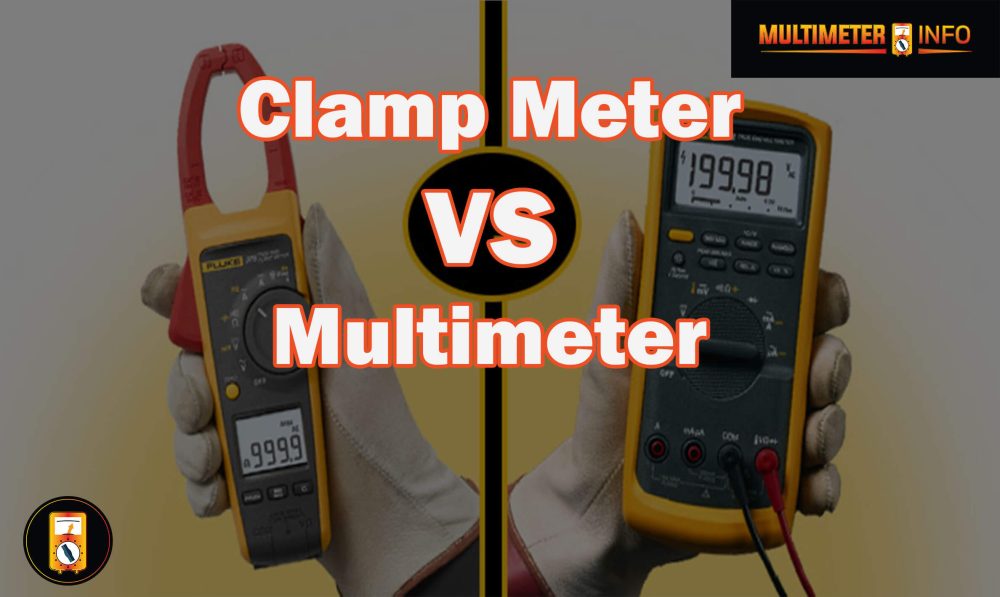It’s that time of year again—unpacking the holiday decorations and trying to put up the Christmas lights. Decorating your home with Christmas lights is fun, but you should always take a few precautions before plugging them in. Testing your lights with a multimeter each season is critical to ensure Christmas lights will sparkle for many holidays to come. Knowing how to use a multimeter can help you avoid unpleasant surprises when you’re halfway through decking the halls! This article will walk you through testing Christmas lights with a multimeter.
How Christmas Lights Works
The old-style Christmas lights operate with tiny light bulbs connected in a single line. Each bulb has two separate contact points, which are part of the same circuit. This is why when one bulb is not functioning, the rest will not work either, as it disrupts the entire circuit.
To get around this problem, modern Christmas lights are wired in parallel, with each bulb having its own set of contacts and its current flow through it. However, some people still prefer the traditional series wiring for their holiday decorations because it can help reduce power usage by keeping all the bulbs at a consistent voltage level.
Understanding how your Christmas lights work can help you diagnose problems more quickly when they occur. If you have an old-style Christmas light with a series of bulbs, check for any burned-out bulbs or loose connections. On the other hand, if your lights are wired in parallel, check for any defective bulbs affecting the whole string.
Whichever type of Christmas lights you choose, it is important to remember always to unplug them when not in use and never to exceed their maximum wattage rating. With proper care, your holiday decorations can last season after season!
How to test Christmas lights with a Multimeter
Tools required to test Christmas lights:
To check the condition of your Christmas lights, you will need a multimeter that includes positive and negative probes, extra working bulbs, and a voltage tester.
Testing the bulbs:
If you suspect a bulb to be broken, there is an easy and efficient way to find out by using a multimeter. In this case, the multimeter acts as a continuity tester. This will help determine if an electric current flows through the bulb without having to check each one individually.
- Make sure that the multimeter is set to ‘continuity’ mode.
- Remove the first bulb on the string and place one of your multimeter probes into the hole.
- Remove the bulb at the middle of the string and place the second multimeter probe into its hole.
- If there is continuity, both bulbs are working fine; however, if you get no response from either one, it means one or both bulbs have burnt out and must be replaced.
- Once you have identified which bulb has burnt out, replace it with a new one and test all other bulbs to ensure they work correctly.
Testing Christmas lights with a multimeter helps save time, effort, and energy in finding out the exact bulb that has burnt out. It is a quick and easy way to test multiple bulbs at once.
Testing the string for continuity
Test the continuity of the light string by setting your multimeter to AC voltage and checking for reading between the male plug end and the female plug end. If you get a zero reading, then there is no problem with the wire string.
- Plug the red probe into the volt-ohms (VΩ) socket and the black probe into the common (COM) socket.
- Set your multimeter to ohms (Ω).
- Place one of your probes into one of the holes on the female side of the string and the other probe on one of the pins on the male side of the string.
- Read your multimeter display; reading should be displayed if there is no problem with continuity in your light string; however, if you get a zero reading, it indicates a continuity issue.
- If you do not get a zero reading, recheck by alternating between different combinations of holes and pins until you get a zero reading.
- If you are still not able to get a zero reading, then there is likely a problem with the light string that needs to be addressed.
- Replace or repair the faulty bulb or wiring as needed.
- Test the light string again to confirm it works correctly before using it as part of your festive decor.
These steps will help ensure your Christmas lights display works as expected and provide a safe holiday. Don’t forget to regularly check the light string for any signs of damage or wear and tear! With proper care and maintenance, you can enjoy the beauty of your festive lights without worry.
How to test Christmas lights with a voltage tester
Testing Christmas lights with a voltage tester is a relatively straightforward process:
- First, plug the electrical string of Christmas lights into a power source.
- Next, take your voltage tester and run it along the wire. If you hear beeps from the voltage tester, a current is in the Christmas light’s wiring section.
- Continue running it along the length of the wire until you reach the end or until you don’t hear any more beeps from the tester – this indicates a break in the circuit or an issue with one of your bulbs, such as a blown fuse or loose connection.
- Once you have identified where the issue lies, use appropriate tools to fix any problems with wiring and bulbs – such as using pliers to tighten connections or replacing a blown fuse.
- Once all issues are resolved, it is a good idea to check the lights with your voltage tester to ensure they’re ready for use.
Following these steps, you can easily and quickly test your Christmas light’s wiring and bulbs with a voltage tester before decorating your home this festive season.
Frequently Asked Questions:
When testing Christmas lights with a multimeter, the most important thing to consider is the voltage. If your Christmas light has two visible wires, it probably requires 120 volts. However, some newer LED string lights may require only 24 or 12 volts. You should always check the product packaging or manufacturer’s website to determine the correct voltage for your particular brand of Christmas lights.
Your multimeter will have several settings – usually labeled as “V-AC” and “V-DC” – that you can choose from when testing Christmas lights with a multimeter. To test AC (alternating current) powered Christmas lights, use the “V-AC” setting; for DC (direct current) powered Christmas lights, use the “V-DC” setting.
To test a single bulb with a multimeter, disconnect it from the string of lights. Carefully unplug or cut off the two wires that power the light and then attach one lead of your multimeter to each wire. Set your multimeter to the appropriate voltage (“V-AC” or “V-DC”), ensure that it is set correctly, and then take your reading. If there is no voltage on either wire, then the bulb must be replaced.
Conclusion:
Testing Christmas lights with a multimeter is an easy and effective way to identify issues or faults in the lights. It allows you to determine which specific bulbs are causing problems so that you can make repairs and ensure your decorations are working correctly for this festive season. After following the steps outlined above, you should be able to diagnose any potential problems with your Christmas light strings confidently. With patience and knowledge, it’s possible to keep all your holiday decorations shining brightly throughout the season!






